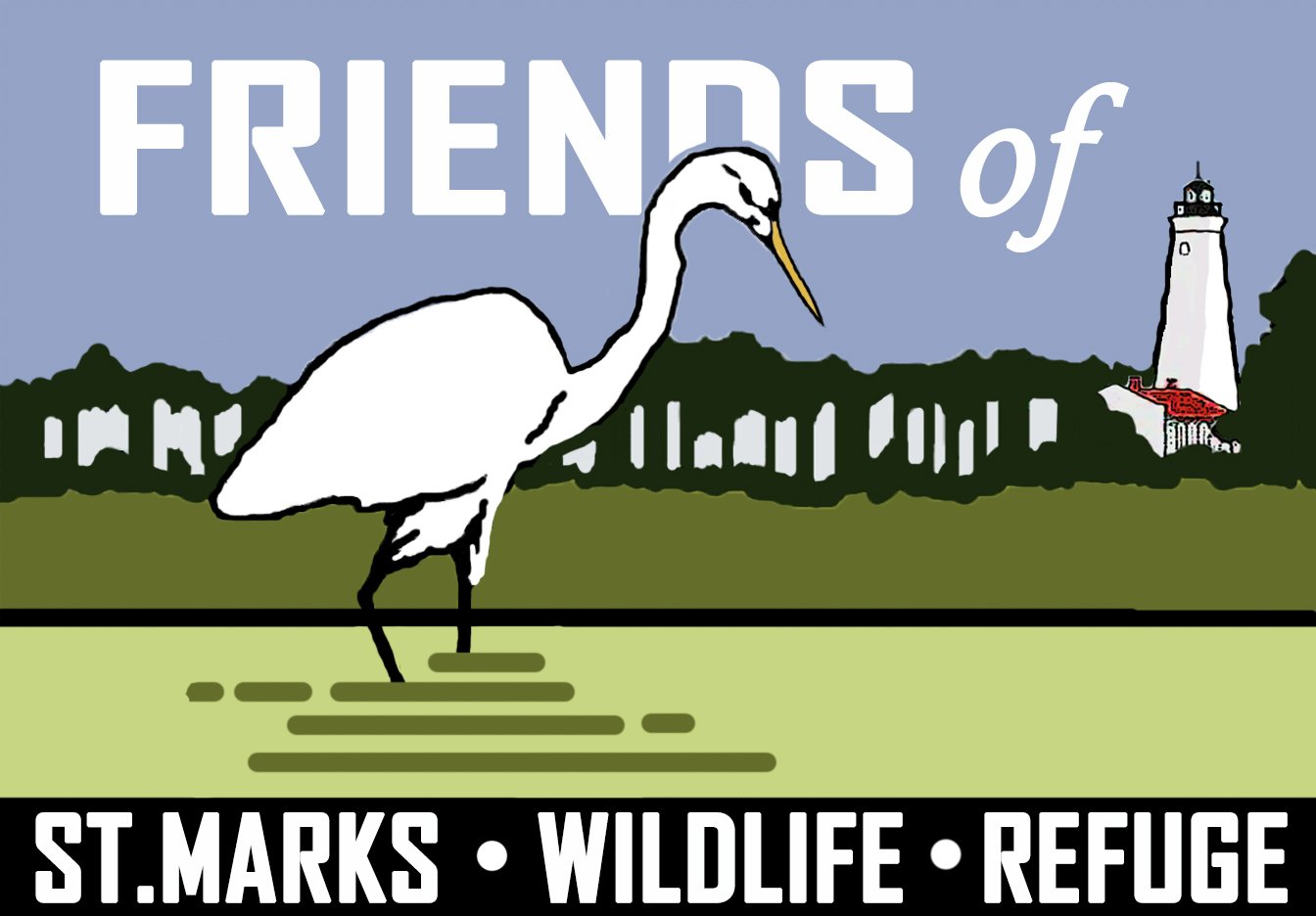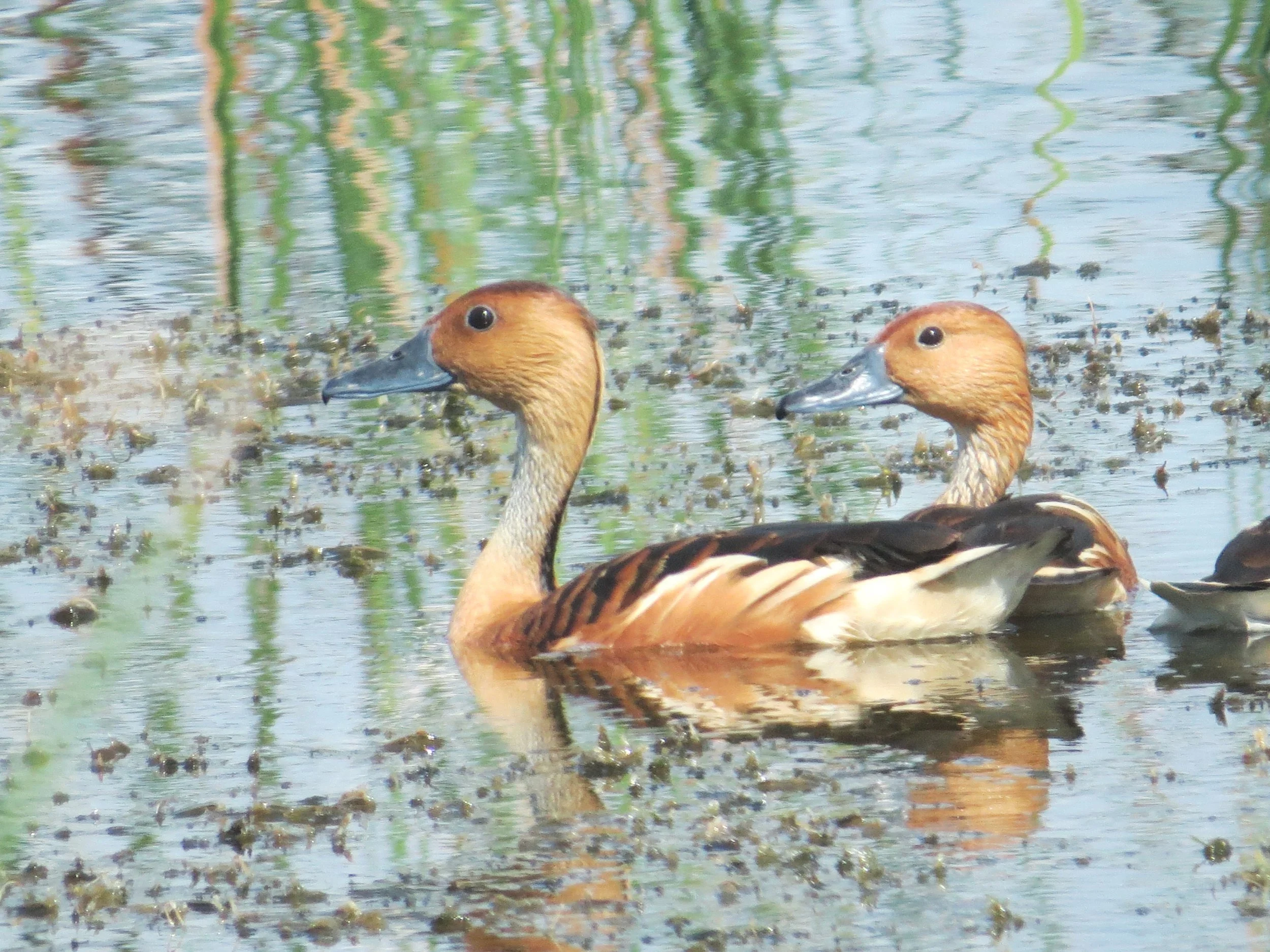I was doing a shorebird survey at St. Marks NWR in early August when I saw three Fulvous Whistling Ducks. They are tropical ducks whose range extends up into Central Florida and are one of the fourteen waterfowl species that occur at St. Marks, but are not seen every year. A few of these species, like Common Eider, have only been recorded once. Others, like Greater White-fronted Goose are seen in most, but not all, years. Fulvous Whistling Ducks have only been recorded at St. Marks a handful of times and I had definitely not expected to see them.
Although, its 80,000 acres provide habitat for a wide range of birds, mammals, reptiles, and amphibians, St. Marks NWR was founded as a waterfowl refuge. Thirty-eight waterfowl species have been recorded at the refuge, twenty-four of which are annual. Most of these species are winter birds, but Wood Ducks are resident and Black-bellied Whistling Ducks migrate through the refuge.
We are at the very beginning of the duck season at St. Marks. August is not a big duck month. I expect only the first Fall Blue-winged Teal, our resident Wood Ducks and any odd birds that refused to migrate – this year we had a pair of Greater Scaup that stayed through the first part of the month.
September often sees Northern Shovelers coming in, but duck numbers and diversity at the refuge won’t really start increasing until October and will then climb rapidly up to a peak of over two thousand birds in December and January before beginning to drop in February.
St. Marks NWR is part of a national system of public and private lands that protect breeding, migratory stopover, and wintering sites for waterfowl. I look forward to the St. Marks’ winter duck season every year. There is something majestic and timeless about watching a mixed flock of hundreds of ducks flying against the backdrop of a pure December sky.
The US Fish & Wildlife Service has just released their Waterfowl Population Status 2023 report. It surveys most North American duck species, with the exception of sea ducks and Wood Ducks. This year it showed approximately thirty-two million ducks, a decrease over last year and a continued decrease from the high of around fifty million in 2015. Since the annual survey began in 1955, it has shown spikes and dips in the duck population, related to weather, climate and the availability of suitable habitat for breeding. This year’s numbers are likely affected by drought in the Canadian prairies.
About 70% of North American ducks breed in Canada and it will be interesting to see what effect the Canadian fires will have on our duck populations. The population survey is done at the start of the nesting season and doesn’t reflect failed nesting or mortality due to the fires. Already, there are birding reports from Maine showing that boreal forest-nesting warblers – usually the last birds to migrate – are showing up early. The fires may have caused them to give up on nesting for the year.
The duck season at the refuge starts out slow and you still have plenty of time to come down and get in on it. Who knows? Maybe you will find a rare duck.

